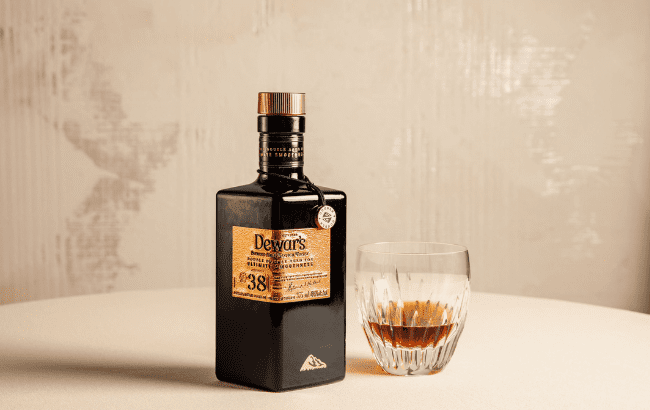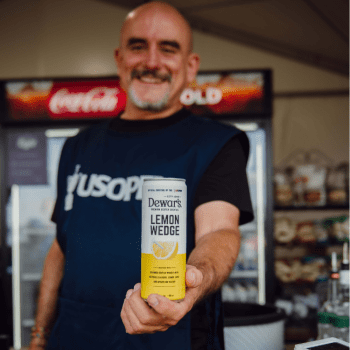Is cask finishing still innovative in Scotch?
Dewar’s North American vice-president Brian Cox on how cask finishing in Scotch can be “truly innovative” and why aged blends are on the rise.

Innovation, particularly with cask finishing, has revolutionised the whisky business, however Cox queries the sorts of cask finishes that can still be considered innovative.
Speaking to The Spirits Business, Cox believes that cask finishing can still be classified as innovative “if the flavour is different and the final product is new”.
He suspects, though, that “you’ll see over the next year or so, debates about whether cask finishing is truly innovative anymore in Scotch whisky, because it’s so widespread.”
The innovation wheel is turning, where Cox notes that it’s really important for whisky brands not to “do innovation for the sake of innovating, or just bringing new SKUs to occupy shelf space”. “It should be about creating flavour profiles to delight consumers and experts alike,” he says.
Cox perceives that a lot of innovation came initially from single malts, and that Dewar’s – which specialises in blended Scotch – has built from those, starting off with its eight-year-old range, which is more accessible, then perfecting that and then “taking it one stage further”.
For its Double Double series, which offers whiskies aged through a four-step process, the brand has updated the 21-year-old from the range with a twist; stone-toasting the cask. “Whether it’s through direct fire or toasting using hot stones, that has different effects on the porosity of the wood,” Cox explains. “You‘ve seen us with Double Double where we recast – as in we blend the malt together, the grain together, and recast them to marry together – to impact the flavour and the texture.”
He adds: “If what’s in the glass justifies it, then that’s our litmus test for ‘should we go on with it and should we bring it to market or not?’ And so far so good.”
While Dewar’s has new innovations in the pipeline, the brand has to be careful and selective about which ones it brings to the market, Cox says. “At the moment there’s a lot of disturbance in the market.”
Cox also points to the work Dewar’s and its master blender Stephanie Macleod have done across its whole portfolio over the past five years.
“Stephanie has been here (for some 25 years) for the time that it takes to actually mature a lot of these whiskies. That’s why you’ve seen us reinvent our 12-year-old, which is recognised by judging panels and competition entities as one of the best blended Scotch 12-year-olds ever. That was when we finished the 12-year-old in first-fill Bourbon casks for six months and we evolved the flavour profile that way.
“Yes, it’s about age, but it’s also about how we re-cask to marry flavours between the different stages of blending. That culminated in our first ever blended malt this winter. Then there’s Dewar’s 38 Year Old. Our breadth of product development really goes back to the product first and foremost.”

Interest in aged blended Scotch
Blends have also seen a revival in recent years after much of the focus in whisky has been on single malts since the 90s.
Of the renewed interest, Cox thinks that aged blends in particular are “attracting that generation of drinkers”, those who were originally lured in by single malts, who are now looking to expand their repertoires, or “area of discovery”, as Cox terms it.
“That’s the important thing: aged blends versus blends that don’t have an age statement because they are a bit younger. I think aged blended Scotch has really hooked people’s imagination, and their palettes as well, because it’s not about being better than single malt or less good – it’s about being different and complementary.”
Compared to single malts, Cox considers blends may offer a greater array of flavours.
The brand’s younger aged expressions (below 18 years) tend to be more Bourbon cask-driven in profile, while its Double Double range – which starts from 21 years and rises to 38 – makes use of Sherry casks to enhance flavour.
“Again, at least 60% of the flavour of the whisky comes from the type of casks that are used,” Cox explains. “I think that you get a breadth of flavours that you might not get in a single malt, where you’ll get all the depth. But I think that our blending delivers both the depth of flavour, but a broader range of flavours – as you would expect when you blend 40 different single malts with two grain whiskies. It will by definition, have a broader palate of flavours.”
And for Dewar’s – much like its new Here’s to the Story campaign – this is reframing Scotch for a new generation: “You’ve got an amazing mouthfeel, so that combination of flavour and profile is in the liquid, and then we’re also reinventing through campaigns like Here’s to the Story. We’re still introducing it as high-end, still as a special occasion, but maybe as a more accessible one.”
Deseasonalising Scotch
Dewar’s has also found success in sport, namely in golf with a long-time partnership with the US Open. The brand annually releases a limited edition whisky to mark the tournament and also has an on-site RTD (ready-to-drink) cocktail, which it doesn’t commercialise.

The tournament falls over Father’s Day (the third Sunday of June), which Cox sees as a key gifting period and consumption occasion. He explains: “You can see how we’re using both the partnership and the sponsorship of the US Open, and the innovation of Dewar’s 19-year-old, which is a kind of nod and a wink to the golf’s famous 19th hole (the pub or bar near a golf course, where punters head to after), to deseasonalise Scotch whisky sales that have traditionally been very concentrated in the months of October-December. Using that key gifting period, which is Father’s Day in June, that’s been really successful and positive for us.”
In the States, Cox observes that golf has “undergone a massive revival thanks to Covid-19, where before that you had 24 million people participating in or following golf, and now that number is closer to 40 million. New things are coming in such as Topgolf and alternative golf leagues. Like blended Scotch whisky, we’ve seen a real rejuvenation in the game of golf – it’s one of these lifestyle sports and a lot of the values you find in golf, you find in appreciating Scotch whisky too.”
Reflecting on the brand’s canned cocktail called the Dewar’s Lemon Wedge, which is only sold on-site at the US Open, Cox compares it to Grey Goose’s Honey Deuce cocktail.
“We have an official cocktail with the USGA [US Golf Association] called the Dewar’s Lemon Wedge, which is obviously a play on the wedge – Dewar’s, soda water and lemonade, finished off with a lemon wedge.
“Again, that deseasonalises the consumption of Scotch whisky and Dewars, which is traditionally enjoyed either neat, on the rocks or with soda, and in some markets with ginger ale or coke – that’s more at the entry level. As you get into the older, more premium markets, people tend to drink on the rocks. This is a way of deseasonalising the consumption of Dewar’s, bringing it into the summer months, and introducing it to a new audience as well.”
Related news
The English unveils ‘once-in-a-generation’ whisky
